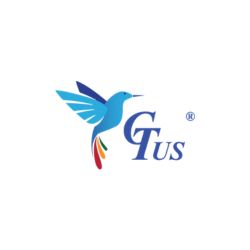Industrial inkjet printers play a crucial role in manufacturing, packaging, and high-speed printing applications. Choosing the right printer ensures efficiency, durability, and high-quality output. Here are the essential features to consider when selecting an industrial inkjet printer.
1. Printing Speed and Performance
For businesses handling large-scale printing, high-speed addressing printers system in the USA is a key requirement. A printer with fast output capability ensures smooth operations without production delays.
- Look for models that can handle high-volume printing without compromising quality.
- Consider printers with variable-speed settings for flexibility in different applications.
- Evaluate print speeds in characters per second (CPS) or feet per minute (FPM) based on your needs.
2. Print Resolution and Clarity
Clear and legible prints are essential, especially in industries requiring barcodes, expiration dates, or fine text. High-resolution printers produce crisp, detailed prints that enhance readability.
- Choose a printer with adjustable resolution settings for different materials.
- Look for DPI (dots per inch) specifications to determine print clarity.
- Verify that the printer can maintain consistency at high speeds.
3. Ink Compatibility and Cost Efficiency
Ink type plays a major role in print durability and cost-effectiveness. The right ink ensures long-lasting prints while keeping operational costs under control.
- Select a printer that supports different ink types, including solvent-based, water-based, and UV-curable inks.
- Consider ink consumption rates to optimize long-term expenses.
- Look for eco-friendly ink options to comply with industry regulations.
4. Material Versatility
Industrial inkjet printers should handle a variety of surfaces, from porous materials like cardboard to non-porous substrates like glass, plastic, and metal.
- Check if the printer supports multiple materials without requiring frequent adjustments.
- Ensure compatibility with your production line’s specific packaging and labeling requirements.
- Look for printers with automatic material detection for seamless operation.
5. Durability and Build Quality
Industrial environments demand rugged and reliable printers that can withstand continuous use. A well-built printer reduces downtime and maintenance costs.
- Choose models with a sturdy metal frame and durable components.
- Ensure the printer has resistance to dust, moisture, and temperature fluctuations.
- Look for user-friendly maintenance features, such as quick-access printheads.
6. Connectivity and Integration
A modern industrial printer should integrate seamlessly into existing production lines for smooth workflow and automation.
- Opt for printers with multiple connectivity options, including Ethernet, USB, and wireless compatibility.
- Look for software compatibility with production management systems.
- Ensure remote monitoring features are available for real-time performance tracking.
7. Ease of Use and Maintenance
A printer that is easy to operate and maintain improves productivity and reduces downtime. User-friendly interfaces and automated maintenance features can save valuable time.
- Choose printers with an intuitive touchscreen display for simplified operation.
- Look for automatic cleaning functions to prevent ink clogging.
- Consider models with tool-free maintenance options for quick servicing.
8. Compliance with Industry Standards
Businesses in regulated industries, such as pharmaceuticals and food packaging, must ensure that their printers comply with industry standards.
- Verify compliance with FDA, ISO, and other regulatory requirements.
- Ensure the printer meets safety and hygiene standards for sensitive applications.
- Look for printers with tamper-proof coding features to maintain authenticity.
9. Cost of Ownership
Beyond the initial purchase price, factor in long-term costs such as ink, maintenance, and replacement parts. A cost-efficient printer balances performance with affordability.
- Compare ink consumption rates between models.
- Check warranty coverage and service plans for cost-effective maintenance.
- Look for energy-efficient designs to reduce operational expenses.
-
Final Thoughts
Selecting the right industrial inkjet printer requires careful evaluation of speed, print quality, material compatibility, and cost efficiency. If you are searching for a reliable Inkjet Printers Supplier USA, ensure they offer high-quality products with strong customer support. Investing in the right printer ensures long-term efficiency and uninterrupted production.





Comments